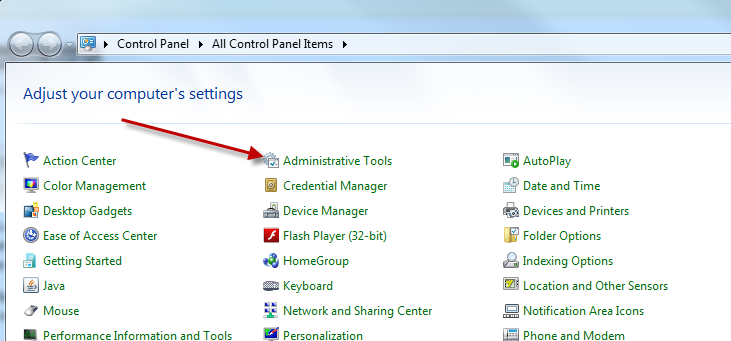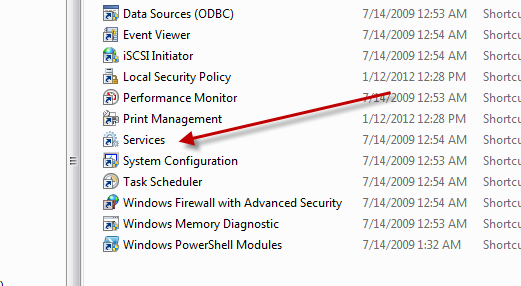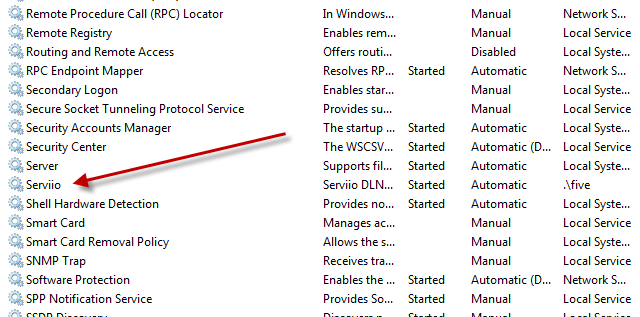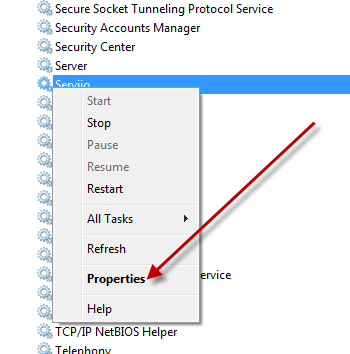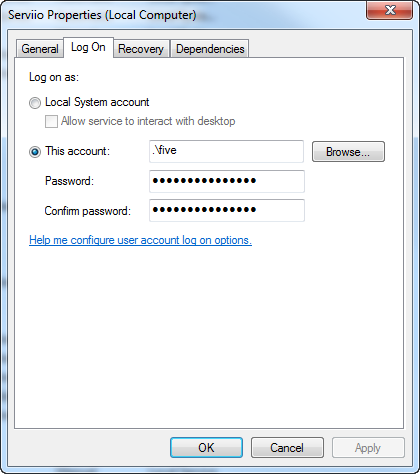Archive for category Operating Systems
My Search for the Best Deal on a Dedicated Server
Posted by Randy in Networking, Operating Systems, technology, Web Development on January 22, 2012
Searching for a dedicated server can be stressful, especially when you have a lot of sites that are running slow as a result of their current host. Recently, I switched about 600 sites over to a dedicated server I borrowed from my friend Lynn. It is a pretty decent server, with two dual core Xeons running at 3 GHz. It also has 8 GB of RAM. However, it’s just not enough. After switching DNS over to this new server, its load went to 20 very quickly. For those who don’t know, a load of 20 means that there are 20 processes waiting in line to be processed. I don’t like my loads to go above 2 or 3. I can deal with them spiking to as high as 4, but with a multicore/multiprocessor I don’t want it to get above the number of cores/processors you have available.
Suffice to say that the web sites were loading very slowly. So, I switched the NS back to the VPS server I’ve been running them on. I’ve seen its load spike to 10 quite often but it normally stays well below 4. So the VPS is holding up pretty well considering. This VPS has 4 cores assigned to it, each at 1.6 GHz. It also only has 3GB of RAM. So, my question is, “Is a dedicated server really the best option?”.
There’s more factors in this as well. For instance, my sites are all on a WHM/cPanel install, which means I have to pay a monthly license fee for that as well. On a VPS this license is about half the cost as it is on a dedicated server. I like saving money.
I currently have my hosting through a small hosting provided in Knoxville, TN called Knoxcolo/Smith & Hammaker. I have a colo server (not the one I used for my 600 sites, it’s a single site), and I have the VPS. For the colo they charge $35 for the 1U of rack space, and it’s an unmetered drop. The VPS is $40 per 1GB of RAM. That’s their rate, they don’t charge for extra HDD space or even CPU cores. They are also a good bunch of people to work with. I have full access to the colo facility through a high security system. I rarely use it since my colo has an iLo connection for remote console even when the servers main drop is offline. The security for operational technologies is really necessary to protect the data.
I thought that a dedicated server would be a better choice for my 600 sites, but I’ve found that the VPS is really the better choice in the long run. The only thing I don’t like about the VPS is that I don’t have the ability to remotely reboot the virtual machine. I’d really like this ability.
So I’ve found that perhaps a dedicated server isn’t what I really want. Some VPS providers give you a lot more bang for your buck. You can spend hundreds of dollars per month on a very powerful dedicated server, but you have two problems. You don’t want to spend a lot of money for hardware that you may not use fully. Of course, secondly, you don’t want to spend a lot of money on a server that can’t fully handle the load if you have a lot of sites. With a VPS, you have more power to change the hardware specs to meet the demand of your site load. You pay for whatever you need. This is really the best option for anyone who wants to host any number of sites. If you don’t need much power, because you only have a few sites, you can save money.
However, you should look for the best deal on a VPS. Smaller companies actually have the better deal when it comes to a VPS, because they typically don’t have as much total load on their rack of CPUs. If you get a VPS from a larger provider, they may be pushing their rack to its limits already, and you’ll get terrible physical processor speeds, even if you are paying for four cores.
Shop around and look into VPS servers. They are great alternatives to dedicated or colo servers if you look in the right place.
colo servers, colocated servers, dedicated servers, vps, vps prices
Removing Old eth devices from Debian
Posted by Randy in Linux Stuff, Networking, Operating Systems, technology on January 19, 2012
I have a Virtualbox VM which, over time, has been opened on 9 different host operating systems. I reinstall my main OS move than the average person without a doubt. Every time the guest VM is opened from a new host, it adds a new device. So I ended up with 9 ethernet devices. Every time I opened the VM on a new machine I’d also have to reconfigure my static IP. Removing these devices isn’t as difficult as you may think. It’s simply a matter of editing the /etc/udev/rules.d/??-persistent-net.rules file and committing out all the lines that begin with SUBSYSTEM. Then reboot and you should have a fresh eth0.
The Best Linux Distribution
Posted by Randy in Linux Stuff, Operating Systems, technology on January 13, 2012
This subject will raise a few eyebrows from the geek community. Everyone has their favorite Linux distribution. However, this post will be rather unbiased. I have my picks, but I will try to refrain from pushing them. So I’m ranking Linux distributions based on experience but not on personal preference (to an extent).
Choosing a Linux distribution is like choosing a programming language. You should pick the right tool for the job. I see three main uses of Linux as an operating system.
First of all, if you are going to be using Linux in an enterprise/business setting, you should probably learn the industrial standard distribution for enterprises. Chances are, if you are going to be a Linux admin at some big company, you’ll want to learn Red Hat (RHEL). It’s a commercial operating system, so if you want to practice using it, you’ll probably want on of its clones. They are usually free and are basically repackaged versions of RHEL. The forerunner of these clones is CentOS. Honorable mentions go to ClearOS and Scientific Linux as alternatives to Red Hat. These clones offer most of the same features as RHEL and give you a nearly exact replica of the Red Hat environment.
Secondly, if you are going to run Linux as a desktop operating system, there are a few good choices. Linux Mint, Debian, and Ubuntu make great desktop operating systems. Of those, I prefer granddaddy Debian. Debian is the basis for which many of the popular desktop Linuxes derive. Ubuntu is an “improved” version of Debian, though really I don’t care for many of the “improvements” and tend to stick with Debian. Linux Mint has two versions. One is derived from Ubuntu and the other is derived straight from Debian. Fedora also provides a good desktop experience and is based on Red Hat. So for you enterprise admins out there, Fedora will feel closer.
Finally, if you want a development server to run in a VM or another machine, I suggest Debian again. It’s one of the quickest and easiest to set up.
If you are a Linux guru, I suggest ArchLinux, as it gives you more control over more aspects of the OS.
One distribution that I’ve never tried (but I should) is Slackware. Many people like it. I personally don’t like being without a package manger.
No matter what you want to use Linux for, there’s a distribution for you. Check out DistroWatch for direct ratings of Linux distributions.
#1 Sole Proprietorship
A sole proprietorship is an unincorporated company that is owned by one individual only. While it is the most simple of the types of businesses, it also offers the least amount of financial and legal protection for the owner. Unlike partnerships or corporations, sole proprietorships do not create a separate legal identity for the business. Essentially, the owner of the business shares the same identity as the company, consistent communication is the key to success. Therefore, the owner is fully liable for any and all liabilities incurred by the company.
An entrepreneur may choose this option if they want to retain full control of the company. Additionally, it is a relatively easy and inexpensive process to establish a sole proprietorship. There are also tax benefits, as income is considered the owner’s personal income and therefore only taxed once. Finally, there are relatively few regulation requirements for sole proprietorships.
#2 Partnership
As the name states, a partnership is a business owned by two or more people, known as partners. Like sole proprietorships, partnerships are able to take advantage of flow-through taxation. This means that the income is treated as the owners’ incomes so it is only taxed once. Owners in partnerships are responsible for the liabilities of the firm. However, there are some nuances to this. There are different types of partnerships: general partnerships, limited partnerships, and limited liability partnerships, look into this coworking space located in Sydney.
General Partnerships: This is the easiest type of partnership to form, with few upkeep costs. Every partner is considered as participating in the operations of the business, and there is unlimited liability for every partner. This means that every partner’s personal assets can be used to repay the liabilities of the partnership. This also means that each partner is responsible for every other partner’s actions.
For example, John and Dave are in a general partnership. If John is sued for malpractice, Dave’s personal assets may also be claimed against in the lawsuit.
Limited Partnerships: This type of partnership has at least one general partner. This general partner takes on unlimited liability for the partnership and manages the operations of the company. Additionally, there are also limited partners in limited partnerships. Limited partners only take on as much liability as their financial stake in the business. However, as limited partners, they are not involved in management decisions and do not have any direct control over the company.
choosing the best linux distribution, the best linux distribution
Adding shares to your Serviio library
Posted by Randy in Cool Videos, Networking, Operating Systems, technology on January 12, 2012
Let’s say you are running Serviio as a media server on your Windows machine and you want add share folders to the library. You may find that the share locations show up on your media device but your actual files do not. This is because Serviio is running as a service on your computer and it’s probably being started by the default “System” user. That user may not have access to your shares, especially if you have the shares mounted using specific user credentials. There’s two things I can show you to fix this issue.
First, when you add the folders to Serviio make sure to add them via the “network”. In other words, if you have the shares mounted as mapped drives, don’t use the mapped drive letters. I experienced some issues when doing it that way. Secondly, you’ll want to configure the service to run under your user account. Here’s the step-by-step:
First open control panel and open Administrative Tools:
Next double-click “Services”:
Find the Serviio Service:
Right click on it and choose “Properties”:
Click on the “Log On” tab and set the credentials for the user which has access to the Windows Share:
Hit OK and stop/start the service by right clicking on it and choosing “Stop”. After it stops, right click again and choose “Start”.
You should now be able to access the files from your media device (PS3, Xbox360, and other).
How to remove launchers from Gnome 3 Panel
Posted by Randy in Linux Stuff, Operating Systems on January 11, 2012
I’ll cut to the chase on this post because this is a silly change to make between Gnome 2 and Gnome 3. If you add a shortcut launcher to the panel in Gnome 3 (classic mode), you will find that a simple right click doesn’t show “remove”.
If you want to remove a launcher from the panel in Gnome 3, you need to press the alt key and right click the launcher. You should then have the ability to move or remove the icon.
Netbean’s Menus Don’t work in Linux Mint 12
Posted by Randy in Linux Stuff, Open Source, Programming on January 11, 2012
Gnome3 has some issues. I really like the look and feel of Linux Mint’s Gnome3 + Mate interface. However, looks aren’t everything. Functionality is important as well. Almost everything works with it but Netbeans is an exception. The menus are completely unusable with it.
The quick solution is to select “Gnome Classic” when you login. I like the look of it as well, and at least everything works in it.
While I’m on the subject, why did Gnome decide to take the path it did with version 3. It’s too much like Unity, and I hate Unity. Why are they moving to this type of desktop? Gnome 2 may not be the prettiest thing available, but it has been the most usable desktop environment for years. They should have just concentrated on improving the look of it, added a few new features, and worked on any bugs they had laying around. Most people don’t like Unity or Gnome 3. This doesn’t leave much of a choice other than KDE and XFCE4. Of those, I’d pick XFCE4, but if you have a large userbase like Gnome has, why screw that up by making your new version look like and act like the DE most people are wanting to avoid? I just don’t get it.
Codeigniter Controllers Give Server 404
Posted by Randy in Linux Stuff, Operating Systems, Programming, Web Development on January 11, 2012
I often take shortcuts when setting up my development servers. I recently installed Linux Mint 12 x64 on my main box and wanted to setup a web developing environment on it. To cut corners during package installation, I’ll typically install phpmyadmin which grabs most of the dependencies I need to have a full LAMP dev stack, such as Apache2 and Mysql-server.
That’s how I initially set up my stack in Linux Mint. I also enabled user directories in Apache so I could develop within the public_html directory inside my home directory. All was working well until I copied a CodeIgniter project over and tried it out. I couldn’t access my controller functions from index.php. It worked well for the default controller because it was accessing it from index.php, but when I changed the URL to point to a controller like index.php/admin, it didn’t know what to do with it and I would receiver a server 404 error.
After digging around for a solution, I realized that when I installed my LAMP stack, apt had installed libapache2-mod-php5filter instead of libapache2-mod-php5. I’m not very familiar with this module or what benefits come from using it, but the quick fix was to:
sudo apt-get install libapache2-mod-php5 |
sudo apt-get install libapache2-mod-php5
This removed the php5filter module and installed the plain php5 module. After that, I no longer have an issue with the controllers giving 404 errors.
codeigniter, codeignitor, libapache2-mod-php5, libapache2-mod-php5filter, PHP, server 404 codeigniter
Windows 7 Freezes Randomly
Posted by Randy in Applications, Windows on December 28, 2011
I recently reinstalled Windows 7 on my main box because I wanted to do some good screencasts for my PHP Video Tutorials site. After installing a few updates for Windows 7, I started getting a strange issue with audio and video. The OS would glitch. I would get short pauses in video and distortion in the audio.
After killing some processes and services, I soon found out that the problem was with Windows Superfetch. The issue has to do with my SSD drive. So if you have an issue like this and you have a solid state drive, you should try disabling superfetch. After stopping the service, give it a few moments. Play videos and see if you still get the problem.
If you want me to write up a howto on disabling superfetch, leave a comment. If there is any interest, I’ll write it up.
random windows freezes, windows 7 freeze, windows 7 lockup, windows lockups
PHP Video Tutorials
Posted by Randy in Web Development, Windows on December 23, 2011
I just started a new website devoted to teaching people how to develop websites. The site is PHP Video Tutorials. So far I have about 20 videos uploaded. There are nine in the first series which teaches basic HTML and CSS. The second video series goes into PHP and MySQL. I think these videos will be very helpful to anyone who wants to get into web development.
css, html, html tutorial, html video tutorial, PHP, php tutorial, php video tutorial
Couldn’t Load XPCOM
Posted by Randy in Applications, Linux Stuff, Open Source, Operating Systems, technology on November 4, 2011
If you are like me, you like to use the latest plugins for Firefox (when you use Firefox). Things like Firebug have become a staple for my web browser usage. I also love using Debian as my OS, and the stable version comes with a much older version of Firefox (sans logos and with the name iceweasel). Unless you download older version of plugins, most of the time you’ll have trouble installing the plugins you want.
The simple solution is to download and install the latest version of Firefox directly from Mozilla. There’s not much of an install process. Just download and uncompress the file. You’ll get a firefox directory, which I moved over to my home directory and proceeded to create shortcuts for on my desktop and menus.
If you are using the 64 bit version of the OS, you will quickly run into the “Couldn’t Load XPCOM” error. It’s obvious that it is a library issue but the error doesn’t give you a big clue as to how to fix it.
Good news, the fix is extremely easy. You are lacking some 32 bit libs that are required to run the program.
Fix is by running the following as root or with sudo:
apt-get install ia32-libs-gtk
After that, you should be able to run Firefox. Enjoy!
-
You are currently browsing the archives for the Operating Systems category.
Tags
AJAX best double-edge razor best mechanical keyboard best php framework change password in wordpress cheap website hosting cherry mx red codeigniter codeignitor colocated servers colo servers corsair vengeance k90 css debian dedicated servers dns domain blocking ebay firefox gnome 3 sucks godaddy alternative html linux lwjgl mechanical keyboard review Open Source PHP Programming resetting a router resetting router password reset wordpress password resset wp password rosewill rk-9000 review saving passwords symfony twitter ubuntu unity sucks vps vps prices whats-hot-weekly.com x64 Linux xchat script xlack download xlack script youtube- Apple
- Applications
- Boring Stuff
- C++
- Cool Videos
- DIY
- Free Stuff
- Funny Pics
- Games
- Good Deals
- Hardware
- Health
- Home Theater
- Internet
- Internet Money
- Java
- Javascript
- Linux Stuff
- Movies
- Music
- Networking
- Open Source
- Operating Systems
- PHP
- Pipe Smoking
- Programming
- Reviews
- Science
- Security
- SEO
- Server Stuff
- Shaving
- SQL
- Stocks
- technology
- Tips
- TV
- Uncategorized
- Web Development
- Windows
